LED strip lights are a great way to illuminate an area in your home – but you might be wondering how much these LED lights are costing you.
Some people utilize strip lights during the festive season, wrapping up the Christmas tree in the living room or outlining their roof, all done in celebration of a joyful time.
Others use strip lights to give a modern feel to their homes by placing them along the cornice, tracing over the vertical portion of the steps on a staircase, or backlighting drawers.
But do strip lights use a lot of power?
LED strip lights don’t cost a lot of electricity compared to traditional incandescent lights. Consumption is directly determined by the length of the strip light and its light density. A standard 5-meter strip will cost just over $3 a year to run, on average.
In this guide, we’ll take a look at:
- How much electricity your LED lighting strips are using
- The cost to run your LED strip lighting
- How you can work out the consumption of the LED light strips
How Much Electricity Do LED Light Strips Use?
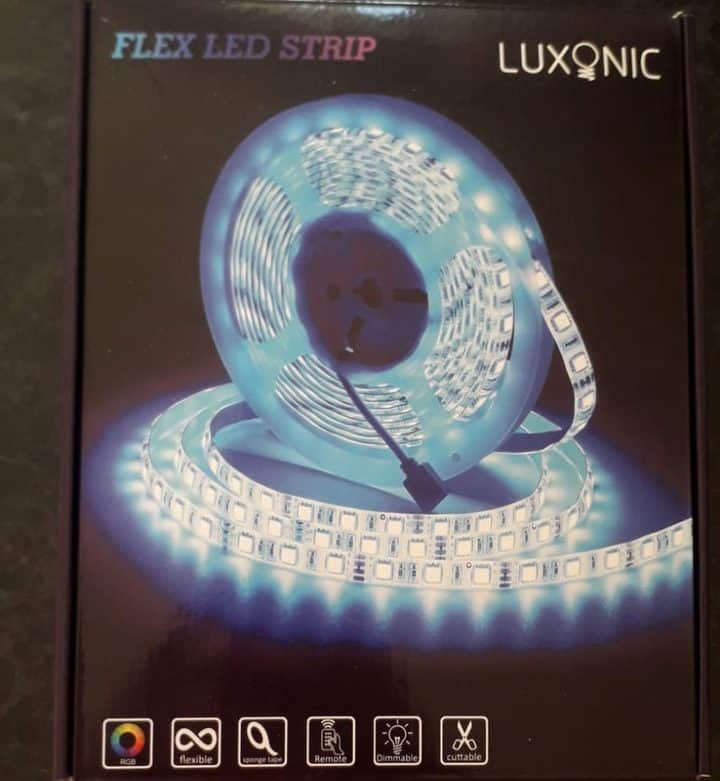
LED strip lights have low power consumption, but the exact amount of electricity they use depends on a number of factors, including the length of the lights and how many LED lights are on the strip. A typical LED strip light uses around 6.5 Watts per 5 meters.
The two main things you need to consider are the power consumption of the strip and the length.
The consumption is measured in Watts per meter, and this will be impacted by a few different things.
Light Density
Firstly, the density of the lights. A standard density LED strip light will typically have 30 light emitting diodes every meter. A high density will likely be 60 or 120 diodes in the same length, although some go even higher.
Diode Size
Then there’s the size of the diodes. These are normally given as a four-digit number which just describes the width and height of the diode. The 3528 diodes (35mm wide, 28mm high) tend to draw less power than a 5050 light strip, but they won’t have as much light output.
So a high-density 3528 strip might have a higher power draw than a standard density 5050 strip.
Measurement Standards
Power consumption should be advertised on the box or webpage when you buy your strips – look for either W/m (watts per meter) or W/f (Watts per foot).
Then, there’s the length of a strip. Considering how power is measured in Watts per meter, that tells you that the more meters to a strip, the more Watts it needs to work. A 1.3W/m strip uses 6.5 Watts for a 5-meter strip but 13 Watts for a 10-meter version.
Another measurement you might see is lumens per meter or lumens per foot. This tells you how bright the strip is. A good quality strip will provide around 1500 lumens per meter.
Don’t assume that lower lumens per meter mean less power used, though – that may broadly be the case. Still, some diodes are more efficient than others, so they may be brighter without upping the power needed.
So to answer the question – how much power do LED strips use?
It depends on the length of the strip and the power consumption, which itself depends on the light density and diode size.
Do Connected Strip Lights Use More Electricity?
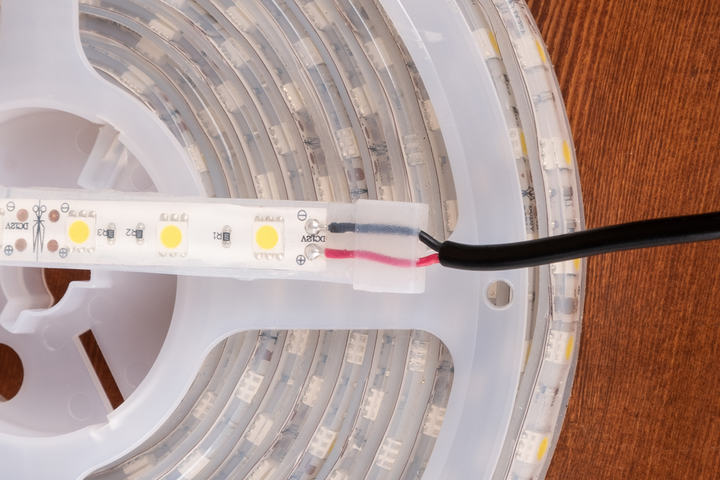
If you connect more strip lights to a circuit, then you will increase electricity usage. Power’s measured in consumption per meter, so the more meters you add on, the more you’re consuming.
Remember that it’s always important to use the same strips in a series – don’t mix and match consumption, as that’ll be dangerous.
You can read more about connecting LED strip lights in my other article.
LED Bulb vs Strip Lights vs Incandescent Bulbs: Which Is Most Efficient?
A 5-meter light strip will usually use a similar amount of power to LED bulbs but a lot less than traditional incandescent bulbs. A standard light strip will use around 6.5 Watts per 5 meters, while LED bulbs vary from 4 Watts to 18 Watts.
Older incandescent bulbs would use as much as 100 Watts on light bulbs for the home, so either LED option is going to be better on your energy bill. LED light bulbs and strip lights use less energy than other traditional lights, including fluorescent lighting too.
But consumption-wise, there’s not a huge difference between an LED light bulb and LED light strips.
Do LED Strip Lights Make Your Electricity Bill High In 2023?
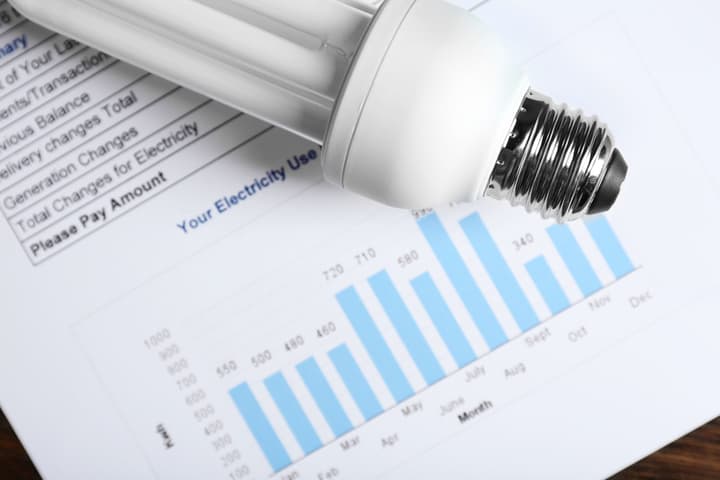
LED strip lights won’t make your electricity bill high. You can leave LED strip lights on for long hours and you won’t incur big charges – even a high-density strip measuring 15 meters uses less than 1 cent per hour.
Let’s use a few examples to show you the costs of running strip lights in real terms.
For this table, we’re using the average electricity cost in the US for 2023, which is 16 cents per kilowatt-hour (kWh).
A kilowatt-hour is the measure of energy that’s equivalent to 1,000 Watts drawn for an hour. So to convert Watts to kWh, you multiply by the number of hours and then divide by 1,000.
We’re also using 1.3W/m as the power consumption of a standard density strip and 3W/m as a high density strip, as examples. Some strips can be much higher, so bear that in mind.
| Power consumption | ||
|---|---|---|
| Length of strip light | Standard density strip – 1.3W/m | High density strip – 3W/m |
| 5 meters | 0.1 cents per hour | 0.24 cents per hour |
| 10 meters | 0.21 cents per hour | 0.48 cents per hour |
| 15 meters | 0.31 cents per hour | 0.72 cents per hour |
To be clear – those values don’t show full cents. That’s no 10 cents per hour for a standard density 5m strip – it’s 0.1 of a cent.
So, even if you run a high-density LED strip over 15 meters and switch it on for an hour, it’ll barely cost you more than half a cent.
Let’s see how that extrapolates over the course of a whole year – let’s say using your LED strips for 10 hours per day.
| Power consumption | ||
|---|---|---|
| Length of strip light | Standard density strip – 1.3W/m | High density strip – 3W/m |
| 5 meters | $3.65 per year (10 hrs a day) | $8.76 per year (10 hrs a day) |
| 10 meters | $7.67 per year (10 hrs a day) | $17.52 per year (10 hrs a day) |
| 15 meters | $11.31 per year (10 hrs a day) | $26.28 per year (10 hrs a day) |
So buy a shorter, standard density strip light, and you’re paying just over $3 for an entire year of regular use. Even a much longer strip with a higher density of LED lights averages out at less than $27 a year or just over $2 a month.
Of course, add an LED strip to every single room in your home – illuminating kitchen cabinets, false ceilings, coving, and more – and then costs will add up.
But does a single LED strip light have high energy usage?
It’s pretty clear that it doesn’t, and they are one of the most energy-efficient types of light you can install in your home.
How To Calculate LED Strip Power Consumption?
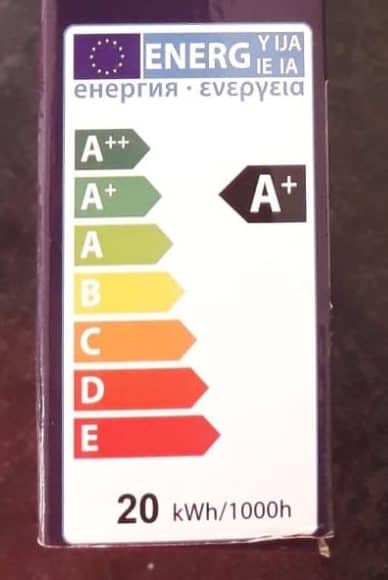
You can easily calculate the power consumption of an LED strip by dividing the total wattage of the light strip by the length. Power consumption is measured in Watts per meter (W/m) or Watts per foot (W/foot).
If you know the power consumption but not the wattage, this works in reverse too. Simply multiply the power consumption by the length of the strip.
If your strip light is 10 meters long and draws 24 Watts, your Power Consumption is 2.4W/m.
If power consumption is 2.4W/m and your strip light is 15 meters, then its Wattage is 36W.
This information is vital when you need to buy a power supply for your strip lights.
Some strip lights don’t provide this information. Let’s use as an example the strip light that I bought not so long ago.
As you can see in the image above, it only states the consumption per 1000 hours, which equals 20kW. Now converting that back to Watts/h is only 20 Watts per the whole strip.
Not too bad.
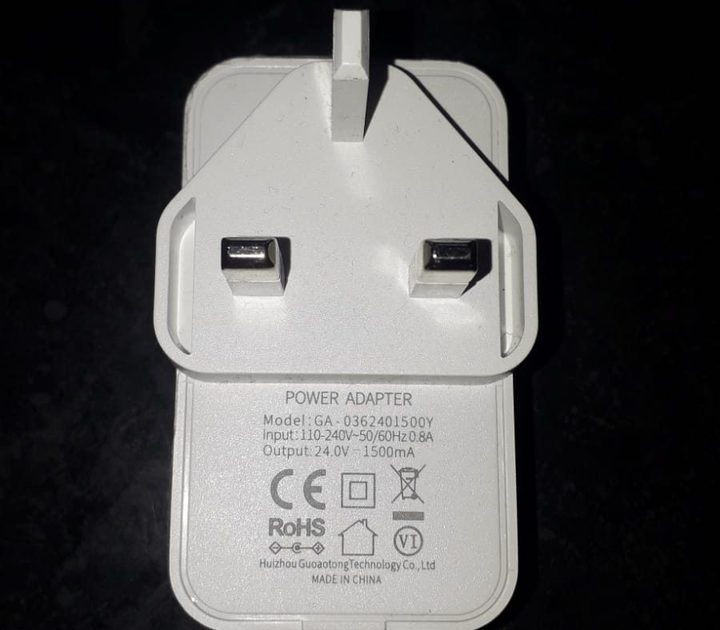
When picking a power supply, remember that it’s okay to get one capable of providing more than what the power supply needs.
In my case, a 36+W power supply can be used. If you look at that image, it doesn’t actually directly tell you the supply’s Wattage.
But it provides all the information to calculate it yourself, which is the output of 24V and amperage, which is 1500mA or 1.5A.
The formula for Wattage is W=V*A, so in my case, it’s 36W. This means that the power supply provided with the strip is 36W.
I always recommend using 20% more Wattage than the actual consumption just to leave room for surges and overloading of the power supply.
Never use a supply that provides less than your strip light needs, i.e., a 12W power supply. This will quickly overload the transformer and will become dangerous.
Final Words
So there you have it — LED strip lights don’t use a lot of electricity and don’t cost much money to run.
They are way cheaper than incandescent light bulbs and CFL lights to run. While LED strip lights might cost you a little more to buy, they are worth it. Think of it as an investment.
And besides, they are very much in demand, which means the price is getting lower and lower.
LED Strip Lights look cool and unique. Use them for accent lighting or festive decorations, and you won’t regret it.
Next, you just need to decide how long an LED strip you need for your room.

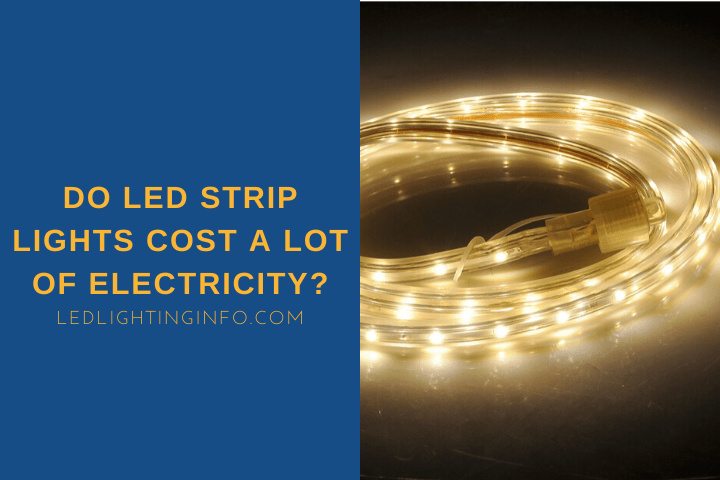
Comments are closed.